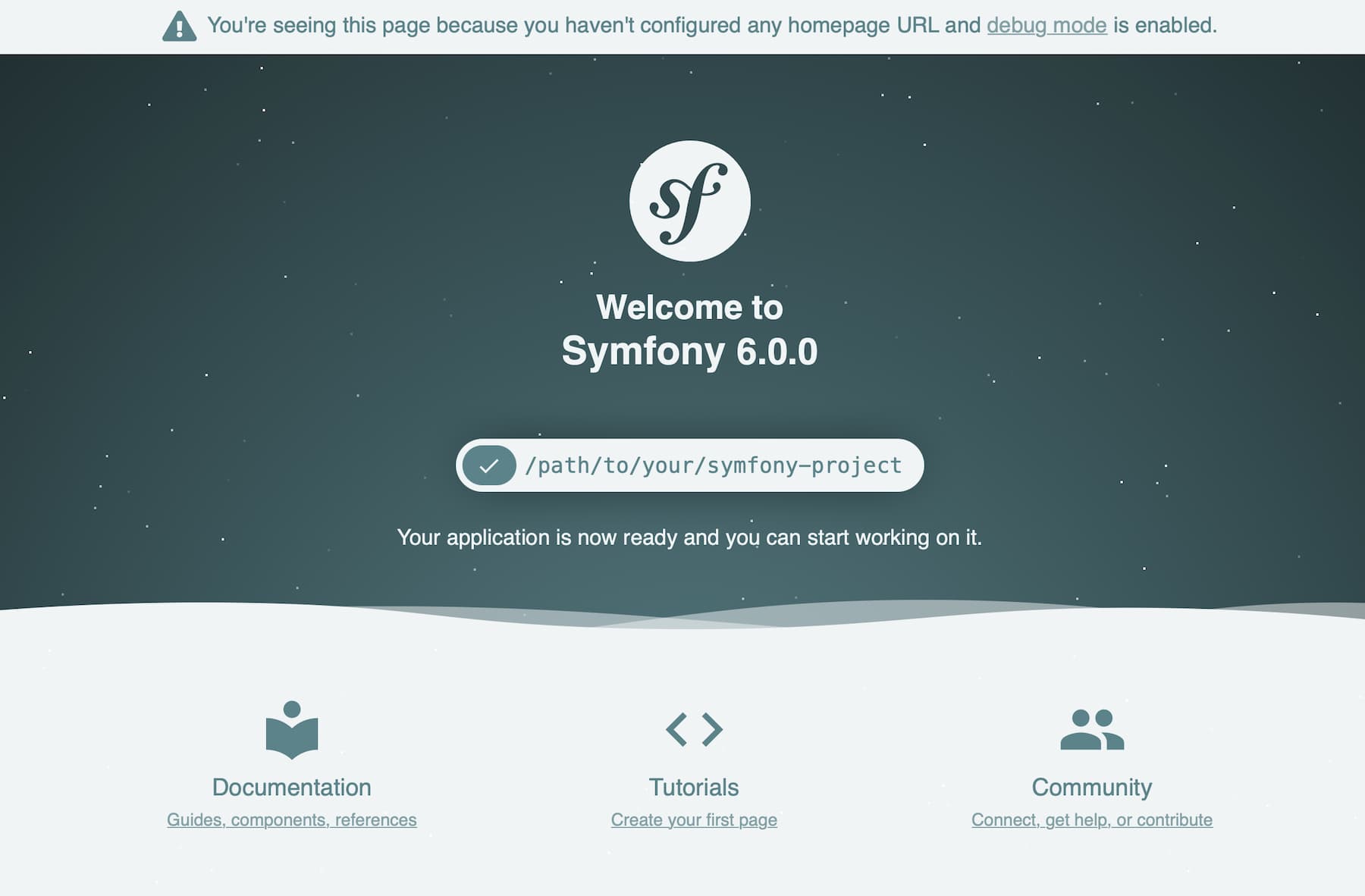The Big Picture
Warning: You are browsing the documentation for Symfony 5.x, which is no longer maintained.
Read the updated version of this page for Symfony 8.0 (the current stable version).
Start using Symfony in 10 minutes! Really! That's all you need to understand the most important concepts and start building a real project!
If you've used a web framework before, you should feel right at home with Symfony. If not, welcome to a whole new way of developing web applications. Symfony embraces best practices, keeps backwards compatibility (Yes! Upgrading is always safe & easy!) and offers long-term support.
Downloading Symfony
First, make sure you've installed Composer and have PHP 7.1.3 or higher.
Ready? In a terminal, run:
1
$ composer create-project symfony/skeleton quick_tourThis creates a new quick_tour/ directory with a small, but powerful new
Symfony application:
1 2 3 4 5 6 7 8 9 10 11
quick_tour/
├─ .env
├─ bin/console
├─ composer.json
├─ composer.lock
├─ config/
├─ public/index.php
├─ src/
├─ symfony.lock
├─ var/
└─ vendor/Can we already load the project in a browser? Yes! You can setup
Nginx or Apache and configure their
document root to be the public/ directory. But, for development, it's better
to install the Symfony local web server and run
it as follows:
1
$ symfony server:startTry your new app by going to http://localhost:8000 in a browser!

Fundamentals: Route, Controller, Response
Our project only has about 15 files, but it's ready to become a sleek API, a robust web app, or a microservice. Symfony starts small, but scales with you.
But before we go too far, let's dig into the fundamentals by building our first page.
Start in config/routes.yaml: this is where we can define the URL to our new
page. Uncomment the example that already lives in the file:
1 2 3 4
# config/routes.yaml
index:
path: /
controller: 'App\Controller\DefaultController::index'This is called a route: it defines the URL to your page (/) and the "controller":
the function that will be called whenever anyone goes to this URL. That function
doesn't exist yet, so let's create it!
In src/Controller, create a new DefaultController class and an index
method inside:
1 2 3 4 5 6 7 8 9 10 11 12
// src/Controller/DefaultController.php
namespace App\Controller;
use Symfony\Component\HttpFoundation\Response;
class DefaultController
{
public function index()
{
return new Response('Hello!');
}
}That's it! Try going to the homepage: http://localhost:8000/. Symfony sees
that the URL matches our route and then executes the new index() method.
A controller is just a normal function with one rule: it must return a Symfony
Response object. But that response can contain anything: simple text, JSON or
a full HTML page.
But the routing system is much more powerful. So let's make the route more interesting:
1 2 3 4 5
# config/routes.yaml
index:
- path: /
+ path: /hello/{name}
controller: 'App\Controller\DefaultController::index'The URL to this page has changed: it is now /hello/*: the {name} acts
like a wildcard that matches anything. And it gets better! Update the controller too:
1 2 3 4 5 6 7 8 9 10 11 12 13 14 15
<?php
// src/Controller/DefaultController.php
namespace App\Controller;
use Symfony\Component\HttpFoundation\Response;
class DefaultController
{
- public function index()
+ public function index($name)
{
- return new Response('Hello!');
+ return new Response("Hello $name!");
}
}Try the page out by going to http://localhost:8000/hello/Symfony. You should
see: Hello Symfony! The value of the {name} in the URL is available as a $name
argument in your controller.
But this can be even simpler! So let's install annotations support:
1
$ composer require annotationsNow, comment-out the YAML route by adding the # character:
1 2 3 4
# config/routes.yaml
# index:
# path: /hello/{name}
# controller: 'App\Controller\DefaultController::index'Instead, add the route right above the controller method:
1 2 3 4 5 6 7 8 9 10 11 12 13 14 15 16
<?php
// src/Controller/DefaultController.php
namespace App\Controller;
use Symfony\Component\HttpFoundation\Response;
+ use Symfony\Component\Routing\Annotation\Route;
class DefaultController
{
+ /**
+ * @Route("/hello/{name}")
+ */
public function index($name) {
// ...
}
}This works just like before! But by using annotations, the route and controller
live right next to each other. Need another page? Add another route and method
in DefaultController:
1 2 3 4 5 6 7 8 9 10 11 12 13 14 15 16 17 18
// src/Controller/DefaultController.php
namespace App\Controller;
use Symfony\Component\HttpFoundation\Response;
use Symfony\Component\Routing\Annotation\Route;
class DefaultController
{
// ...
/**
* @Route("/simplicity")
*/
public function simple()
{
return new Response('Simple! Easy! Great!');
}
}Routing can do even more, but we'll save that for another time! Right now, our app needs more features! Like a template engine, logging, debugging tools and more.
Keep reading with Flex: Compose your Application.